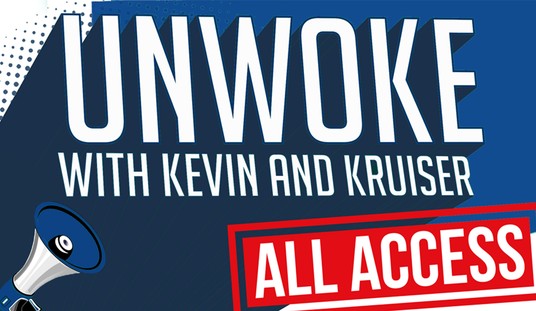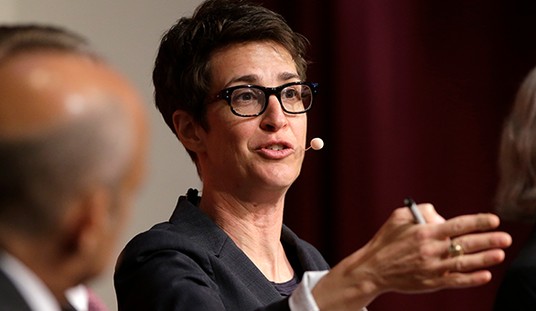https://www.youtube.com/watch?v=a9p2jhkjtgw
See the previous installments in Mark Ellis’s exploration of Adam Carolla. From January 21, 2015: Adam Carolla: The Quintessential Counterculture Conservative?. And from February 6: President Me: Adam Carolla Vs. the Scourge of Narcissism.
Submitted again for consideration, Adam Carolla, born as his very cohort, Generation X, was beginning in 1964.
Joining him in this chapter is writer Chuck Palahniuk, born in 1962, another prominent Gen X cultural figure.
Consider now, as the swath of humanity that followed the boomers reaches full majority, in fullest possession of its powers, how variant Carolla/Palahniuk countercultures confront what we see on the horizon. How will the legacy of Generation X be written from this point forward?
How will a generation’s power-players and cultural icons impact, for example, policymaking on healthcare, strategies for dealing with the radical Islamist threat, and the social landscape that the millennials following them will inherit?
In September 2013, PJ Lifestyle editor David Swindle, riffing on Strauss and Howe’s Millennials Rising: The Next Great Generation, laid out his self-described “oddball” take on generational theory. Swindle argues for more detailed time-frame specifications in generations, recommending five year break-downs in place of the usual twenty — “boomer-leaning Gen-X-ers,” “Millennial-Gen-X blends,” “Gen-X-leaning Boomers,” “Millennial-leaning Gen-Xers” and so forth.
However you want to slice and dice the decades — for the sake of this discussion, Carolla and Palahniuk are instructive examples of the reactions, rebellions, and disillusionments of a generation shaded by oblique pathos.
On the earliest cusp of X, Carolla is part of the generation that inherited a choice between three ideological frameworks: progressivism, reactionary traditionalism, and unaffiliated rebelliousness.
Palahniuk predates the official kick-off of X, but is arguably too young for the boom. He served as a transitory figure, a harbinger of Gen X‘s devastatingly critical, tribal quest for definition.
Adam Carolla and Chuck Palahniuk, an unlikely duo but for their Gen-X lineage, hold claim to tributary subcultures that were natural responses to the boomer counterculture that rejected button-down corporatism and neo-Victorian social mores.
Where Palahniuk twists culture to his visionary fictional ends, Carolla goes hammer and tong to make sense of it.
My first adult experience with Gen X came primarily from two sources. First, when I met younger parents from across the socieo-economic spectrum in my children’s schools. Second, when I hired or began to compete with young guys coming up in the paint-contracting trade.
Something I noticed about both cohorts right off: Gen-X cynicism on the subject of national pride, a rejection of the reflexive patriotism that I had been inculcated with since birth.
We said the Pledge of Allegiance, with God and without irony, every morning at Hillview Crest Elementary School in Hayward, California. This ritual recitation was not yet under assault when Carolla and Palahniuk were schoolchildren in the late sixties and early seventies, but criticism of the Pledge on grounds of church/state separation was coming.
Another noticeable difference I discerned between my fellow boomer kids and many in the generation supplanting mine was a devolved sense of the wisdom and integrity of the elders. Though we’d rebelled against parental and societal units, they were intact units for most of us, and thus recipient of residual respect.
X was rebelling against the failure of the units. Who can blame them for skepticism about narratives handed down in the midst of social transformation?
Another striking thing about the Gen-X parents with millennial children: they were having fewer kids. At least in my neck of the woods—white suburbia around Portland, OR. Gone were the large families I remembered from the grade schools of my youth, with three, four, and even five children. There were lots of single moms in the mix, many with only one child.
Even as Gen-X emerged from the flatlands of generational history, predecessors found the crop coming up to be at a vague, not-immediately-readable disadvantage. There was the sense that despite the boomer legacy of conformity as fifties children and upheaval as sixties teens, somehow the squarely situated boomer-kids had it better than their children.
Palahniuk summed things up in Fight Club, when antagonist (if the term even applies here) Tyler Durden says,
Our Generation has had no Great war, no Great Depression. Our war is spiritual. Our depression is our lives.
Though Palahniuk’s theme of alienation and purposelessness can be extrapolated universally, Durden’s morose dictum is understood to most apply to the generation stuck between the boomers’ long fade and the heel-snapping millennials.
The Greatest Generation had Pearl, the boomers had JFK. September 11, 2001, belongs to all of us, but history bequeaths it to the millennials.
Applied mythos for Gen X doesn’t focus on any history-making date.
Their crisis moment is like Palahniuk’s depression, which moves from functioning to acute. They came from broken homes, the first, true Children of Divorce.
Tyler Durden again, “a generation raised by women.”
Divorce and the ascendancy of feminist theory combined toxically in the era’s primordial soup; norms which boomers only dipped their toes into, Gen-Xers became immersed.
As we move towards a near future as threatening as any that contemporary observers have seen, what is the result of the experiment?
Irony in Carolla’s generation has always aspired to an intellectual gravitas out of proportion to its value as an assessment mode for the human condition. Humor, in the hands of either Carolla or Palahniuk, is internally targeted, at an irremediable state of disenchantment, a diaspora of disillusionment bred by failing social institutions into their very bones.
Though boomers were concurrent in history with social upheaval and the erosion of traditionalism, such counter-ideology had not yet become ingrained into the culture. Boomer kids with positive associations to traditionalist America benefitted from a durable connection, which proved decisive for many with the Reagan Renewal.
But too many Gen X progeny approaching adolescence and young adulthood in 1980 missed the Gipper’s wave. Raised by culturally progressive parents and academic liberals, they flocked underneath the nanny state’s skirts.
Palahniuk’s associations to visceral fear–violence versus ennui, terminal support groupiedom, soap-rendering from fat, corporatism as the ultimate evil–are different from what boomer kids feared in their gut.
Nobody at Hillview Crest Elementary School got divorced. Parents stayed together, for the kids, and we liked it. Crawling under elementary school desks and lore about Khrushchev’s hammering shoe sat heavily in our stomachs. Boomer kids inherited the potential for being incinerated thirty minutes after war broke out.
Carolla and Palahniuk were born into that, but the possibility of death from above peaked with the Cuban Missile Crisis in 1962. Threats from within domestic body-politic were coming home to roost. Gen X could still be atomized by the Russians, but were more imperatively left with the fallout created by existential threats to the pillars of society: marriage, faith, the social contract, industry, and national sovereignty.
There is no generational exactitude. Generations flow; there are overlaps, demographic choke points, trail scouts, and cave fighters. The decimations of disease and war skew the transitions. But there comes a point in life when a person realizes that generational culture has overtaken them.
Songs that boomers lauded as visionary Gen-X anthems are now twenty years old.
Exhibit: Filter’s “Hey Man, Nice Shot,” wherein the twenty-something sons of a post-boom generation offer anguished commentary on the self-inflicted wounds of the patriarchy. Rockers with short hair, a niche signal that the end of boomer hegemony in hard rock had arrived.
It was a message of transition made clear throughout the culture. Now the transition is complete. Generation X is entering middle age, and is running the show.
Prophet and artist are two archetypes delineated in Strauss and Howe’s treatise on the generations. In more exacting archetypal breakdowns, the traits of idealism and the propensity to be reactionary are applied.
Though Palahniuk and Carolla can be described as prophets, artists, and reactionaries, the missing component in Gen X is the idealism. Boomers cornered that market, ran amuck with it, sucking up a lot of air in the process.
A saying as old as the generations equates age with conservatism and youth with liberalism. As Palahniuk’s dystopian literary experiment runs its course to an inevitable end, we find a generation grappling with the ghosts of America’s greatest strengths.
Carolla’s more conservative assault on social dissolution, rampant narcissism, and the lost bearings of culture offers hope that a center capable of holding still exists.
When the focus turns from arts and culture back to the mechanics of real power and the survival of Western culture, Gen X’s response to its own reactionary artists/prophets will determine how history records a generation’s tipping point.
Join the discussion on Twitter. And submit your answer to Mark’s questions for publication at PJ Lifestyle: DaveSwindlePJM [AT] Gmail.com
The essay above is the third in volume 2 of the cultural discussions between the writers of PJ Lifestyle and Liberty Island exploring the history of counter-cultures, the future of conservatism and the role of new, emerging counter-cultures in restoring American exceptionalism.
Volume II
- Frank J. Fleming on February 26, 2015: What Is the Future of Government? Why It Won’t Look Like Star Trek
- Aaron C. Smith on February 26, 2015: What Is the Future of Superheroes? Why They Need To Start Killing Super-Villains
See the first volume of articles from 2014 and January and February 2015 below:
2014 – Starting the Discussion
- Sarah Hoyt, March 22 2014: Interview: Adam Bellow Unveils New Media Publishing Platform Liberty Island
- David S. Bernstein, June 20 2014: What Is Liberty Island?
- Adam Bellow at National Review, June 30 2014 kicking off the discussion: Let Your Right Brain Run Free
- Dave Swindle on September 7, 2014: Why Culture Warriors Should Understand the 10 Astounding Eras of Disney Animation’s Evolution
- Dave Swindle on September 9, 2014: The 50 Greatest Counter-Culture Films of All Time, Part I
- Dave Swindle on September 19, 2014: The 50 Greatest Counter-Culture Films of All Time, Part II
- David S. Bernstein on November 19, 2014: 5 Leaders of the New Conservative Counter-Culture
- Dave Swindle on November 25, 2014: 7 Reasons Why Thanksgiving Will Be My Last Day on Facebook
- Kathy Shaidle on November 25, 2014: Is America Overdue for a Satanic Revival? (Part One)
- Dave Swindle on December 2, 2014: My Growing List of 65 Read-ALL-Their-Books Authors
- Kathy Shaidle on December 3, 2014: Is America Overdue for a Satanic Revival? (Part Two)
- Mark Elllis on December 9, 2014: Ozzy Osbourne and the Conservative Tent: Is He In?
- Aaron C. Smith on December 22, 2014: The Villains You Choose
January 2015 – Volume I
- Paula Bolyard on January 1, 2015: 7 New Year’s Resolutions for Conservatives
- Susan L.M. Goldberg on January 1, 2015: The Plan to Take Back Feminism in 2015
- Kathy Shaidle on January 4, 2015: Did the 1960s Really Happen? (Part One)
- Andrew Klavan on January 5, 2015: In 2015 The New Counter-Culture Needs to Be Offensive!
- Clay Waters on January 5, 2015: The Decline and Fall of Russell Brand
- Mark Ellis on January 5, 2015: How Conservatives Can Counter the Likable Liberal
- Audie Cockings on January 5, 2015: Entertainers Have Shorter Lifespans
- Aaron C. Smith on January 6, 2015: How Mario Cuomo Honestly Defined Zero-Sum Liberalism
- Stephen McDonald on January 10, 2015: Why the New Counter-Culture Should Make Strength Central to Its Identity
- Stephen McDonald on January 16, 2015: The Metaphorical War
- Kathy Shaidle on January 19, 2015: Did the 1960s Really Happen? (Part Two)
- Frank J. Fleming on January 20, 2015: What if Red Dawn Happened, But It Was Islamic Terrorists Instead of Communists?
- Mark Ellis on January 21, 2015: Adam Carolla: The Quintessential Counterculture Conservative?
- Aaron C. Smith on January 29, 2015: Objection! Why TV’s The Good Wife Isn’t Good Law
February 2015
- David Solway on February 2, 2015: For a Song To Be Good, Must It Tell The Truth?
- Mark Ellis on February 6, 2015: President Me: Adam Carolla Vs. the Scourge of Narcissism
- David Solway on February 6, 2015: ‘Imagine’ a World Without the Brotherhood
- Kathy Shaidle on February 9, 2015: Was Rod McKuen the Secret Godfather of Punk Rock?
- Aaron C. Smith on February 10, 2015: Kick NBC While It’s Down: Use The Williams Scandal to Set the Terms of the 2016 Debates
- Spencer Klavan on February 12, 2015: How to Apologize for Your Thought Crimes
- Kathy Shaidle on February 16, 2015: David Byrne: Creepy Liberal Hypocrite
- David P. Goldman on February 18, 2015: Understanding This Bloody Truth About the Bible Will Save Your Life
- Lisa De Pasquale on February 20, 2015: Why American Sniper Is a Much Better Love Story Than Fifty Shades of Grey
- Spencer Klavan on February 24, 2015: How Bad Ideology Destroys Good TV: Why Glee Crashed and Burned









Join the conversation as a VIP Member